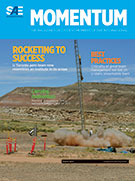Standard
Requirements for Industry Standard e-Tool to Collaborate Quality Assurance Activities Among Customers and Suppliers
2004-06-16
HISTORICAL
ARP9090
GEIA Handbook 859 provides implementation guidance for ANSI/EIA 859, with discussions of applications of the standard's principles, tools, examples, and case studies. Handbook 859 is organized according to the lifecycle of data management and covers activities from the pre-RFP stage through records disposition.












